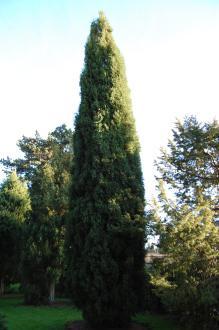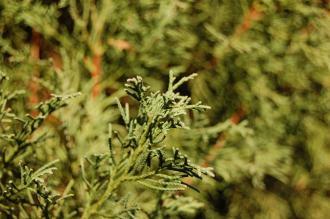
Cupressus torulosa var. gigantea (18/11/2012, Kew Gardens, London)
Position: Full sun
Flowering period: Late spring
Soil: Moist, well drained
Eventual Height: 45m
Eventual Spread: 10m
Hardiness: 8a – 10b
Family: Cupressaceae
Cupressus torulosa var. gigantea is a slow growing, long lived, large evergreen conifer with an irregular conical habit. Its mid to dark green leaves are scale like. Its trunk may achieve a diameter of up to 3m. Its grey/ brown bark is fibrous, thick and peels off in longitudinal strips. Its monoecious flowers appear as cones, the male being globular and up to 6mm across and the female elliptic, up to 2cm across, are green/ purple when young and matures to a dark brown. Its fruit appear as dark brown seed cones and are up to 20mm long and 16mm broad.
The species Cupressus torulosa, commonly known as the Himalayan Cypress or Bhutan Cypress, is native to southern Asia. In its native habitat it grows in subtropical and tropical rainforests, especially on limestone, as a dominant mixed stands or pure stands. The variety Cupressus torulosa var. gigantea, commonly known as the Tibetan Cypress, is classified as Vulnerable according to the IUCN Red List of Threatened Species. Cupressus torulosa var. gigantea is synonymous with Cupressus gigantea.
The etymological root of the binomial name Cupressus is derived from the old Latin name for ‘Italian cypress’. Torulosa is derived from the Latin torus meaning ‘swelling’. Gigantea is from the Latin meaning ‘like that of thee Giants’.
The landscape architect may find Cupressus torulosa var. gigantea useful as a large specimen tree in a parkland setting.

Cupressus torulosa var. gigantea Leaf (18/11/2012, Kew Gardens, London)
Ecologically, Cupressus torulosa var. gigantea provides cover for birds.
Cupressus torulosa var. gigantea prefers moist, peaty, well-drained soils. It tolerates most pH of soil.
Cupressus torulosa var. gigantea requires little maintenance.

